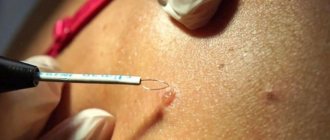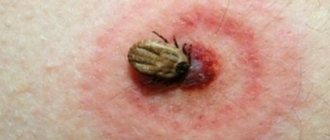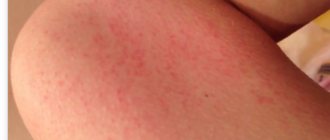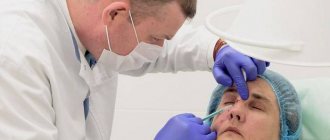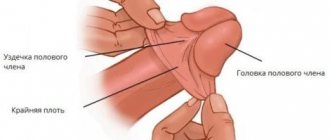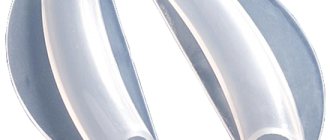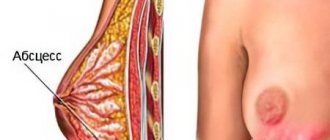Laser facial resurfacing entails serious skin care during the rehabilitation period. This is a very scrupulous process that will require patience and time. The face will look terrible and you need to be prepared for this, but every day with proper care, its condition will improve. Of course, in the first week there is no question of walking outside; the skin will still be too exposed to sunlight and various microbes. But with proper care, rehabilitation time can be reduced.
Rehabilitation period after laser facial resurfacing
In the first day, the face will turn pink-red, you will feel a pulsation, and the skin will seem to be burning. Ichor may be released, and with active facial expressions it may even bleed. Somewhere on the second or third day, a crust will appear at the site of the redness, which will dry out and peel off every day. Due to dryness, severe itching and slight tingling may be felt, but you must be patient and try not to touch your face with your hands at all. Even then you will be able to see new, soft and slightly pinkish skin.
Under no circumstances should you tear off the resulting crust yourself, otherwise scars may remain. The crust should gradually peel off on its own.
Facial skin treatment after laser resurfacing
If you decide to undergo laser resurfacing, you should treat the procedure as a serious operation after which you must strictly follow the rules of rehabilitation. Perform all procedures prescribed by a cosmetologist, using the products that were selected individually for you.
Washing your face during the recovery period
During recovery, you will have to give up running tap water and standard washing in general. Until the skin regains its original appearance, you need to use a spray bottle. Lightly spray your face with boiled or bottled drinking water. After such water procedures, it is better not to dry yourself with a towel, but to let the water absorb. If this option is not suitable, simply pat your skin lightly with a soft natural towel. After washing, some cosmetologists advise treating the skin with a weak vinegar or saline solution.
Causes of deep wounds and prolonged healing
Large amounts of tissue damage after laser surgery are caused by the deep location of the roots of the papilloma. Poor excision leads to recurrence of papilloma.
The accumulation of purulent discharge leads to infection. For deep tissue lesions, sutures are applied. For rapid healing, antibiotics are taken. The result is scars.
In older people, rehabilitation after laser takes longer due to slower regeneration processes.
Skin restoration after resurfacing (preparations)
Skin care products during the recovery period are selected individually depending on the condition after the procedure. However, there are drugs that are most often prescribed after laser facial resurfacing. One of these remedies is Bepanten-plus. It is often attributed to its wound-healing and restorative properties; it also suppresses the activity of bacteria and prevents the development of inflammation.
Also, along with Bepanten, Solcoseryl, Panthenol, Levomekol, Pantesol, Radevit are often prescribed for the rehabilitation period. But again, for whomever is more suitable, it happens that one drug simply does not work, then it needs to be replaced with another. You can also use sea buckthorn oil, it will soften the crust that appears and prevent the development of inflammation. You need to apply the product at least once a day, but you also don’t need to overdo it. Five applications per day is the maximum.
Pain relief during rehabilitation
In general, the rehabilitation period is different for everyone. Some people do not feel any pain after 24 hours, while others suffer from pain for several days. One way or another, Ketanov, Nurafen, or any sufficiently strong painkiller that you have used before will help relieve pain after laser facial resurfacing.
If the pain does not go away after several days, you should contact the doctor who performed the procedure.
Popular questions
What does skin treated with laser for hyperpigmentation look like?
At first the spot becomes darker. Then it peels off for several days, becoming lighter in the process, until it disappears completely.
The skin may peel for a while
How long is the entire course?
This is determined by the characteristics of the spot, intensity, and depth of melanin. A dermatocosmetologist will assess the number of procedures during a personal consultation.
Is it possible to remove freckles this way?
Of course, like any other types of age spots. And thanks to its safety, the method is also suitable for treating the décolleté and periocular area.
You can also get rid of freckles with a laserWhat is the difference between laser therapy for hyperpigmentation and chemical peeling?
This peeling does not distinguish between cells oversaturated with melanin and the rest of the skin. It just deletes it all. And this is very harmful.
What is the rehabilitation period?
He's gone. Just don't wear makeup on the day of the procedure.
What time to choose for laser depigmentation?
You can choose any season for this. The main thing is to use a very good sun protection cream.
This procedure can be carried out at any time of the year.
When should the procedure not be performed?
Contraindications include some diseases, elevated body temperature, pregnancy, and lactation.
What is the minimum age for the procedure?
This procedure can usually be performed on people over 10 years of age unless otherwise directed by a doctor.
The procedure can be performed even on children
Skin care after laser resurfacing
Since the new skin that is formed will be very thin, delicate and sensitive, it will be extremely negative towards the sun's rays. Therefore, throughout the year after the resurfacing procedure, you will need to apply protective creams to your skin. For the first 2-3 months, protection should be at least 35; in subsequent months, you can choose products with less protection (SPF 15). You must apply the cream every time you go outside, regardless of the weather or time of year.
Laser facial resurfacing: disadvantages of the procedure
Perhaps the biggest disadvantage of laser facial resurfacing is that it is simply impossible to get rid of deep wrinkles and scars in one session; a course of procedures is required. And it is worth noting that the price of the procedure is quite high and the course of such sessions, as they say, will cost a pretty penny.
Another serious drawback is the recovery process after the procedure. So, after laser resurfacing, you will have to sit at home for at least a week. Moreover, the recovery will be quite unpleasant, with sensations of pain, burning and tingling.
Removal of pigmentation with AcuPulse laser
Levon Chakhoyan’s clinic is equipped with new equipment of the latest generation - the AcuPulse laser unit.
AcuPulse is a new carbon dioxide laser from Lumenis with built-in SuperPulse™ technology, providing precision pigment spot removal procedures. This protects neighboring and deep tissues from injury, which means it facilitates the recovery period.
Sign up for a free consultation
Send
Thank you!
Information has been sent to the clinic administrators!
Complications after laser facial resurfacing
Complications are possible after any cosmetic procedure, and laser resurfacing is no exception.
- Development of infection. Usually, before the procedure, a course of medications is prescribed that prevent the development of infection, but anything can happen. So, if the skin becomes infected, a course of antibiotics and medications are prescribed to treat the affected areas.
- Skin pigmentation. After the procedure, it is possible to develop hyperpigmentation or hypopigmentation, which will also have to be treated with medication. However, you should be prepared for the fact that redness will persist for 2-3 weeks, and after recovery for 3-4 months the skin will be slightly pinkish.
- Appearance of scars. The appearance of scars is another complication that appears after an incorrectly performed procedure. Namely, an overdose of laser exposure.
- Laser dots. After the procedure, the entire skin will be covered with small squares consisting of small dots; this “pattern” is formed under the influence of a laser beam. Often this mesh effect disappears after 1-2 weeks, in rare cases it remains on the skin for a very long time, but becomes less noticeable.
Which laser is best for getting rid of pigment spots?
Pigment spots are eliminated using the following lasers:
- ruby;
- fractional;
- alexandrite;
- neodymium.
Use different types of lasers
Fractional laser
This device acts selectively on the skin. It destroys only those cells that produce too much melanin. It does not affect healthy areas, and therefore damaged areas heal very quickly. This means that spot removal using a fractional laser does not involve burning the upper layers of the skin.
Fractional laser is used quite often
Alexandrite laser
This device is essentially an optical long-wave quantum generator. It removes excess pigmentation by heating the melanin, thereby destroying it all. In terms of speed of getting rid of pigment spots, this device is a record holder even among lasers. It only affects melanocytes and does not harm healthy skin.
Alexandrite laser does not harm the skin
Neodymium laser
This device can increase the temperature of both melanin and oxyhemoglobin. This allows you to get rid of both vascular formations and pigment spots. The beam does not scatter, affecting only those places where it is needed. Healthy cells are not damaged.
Neodymium laser is often usedRuby laser
The ruby laser is almost never used for age spots: such a device can depigment even healthy skin. To him, healthy and abnormally high amounts of melanin in a cell look the same. As a result, it is destroyed regardless of its quantity. And this prevents the practice of using a ruby laser against hyperpigmentation. As an exception, it happens that Q-switched (one form of a similar device) is used on very fair skin.
Ruby laser is used quite rarely
Laser facial resurfacing: reviews
Reviews about laser facial resurfacing are quite mixed and are divided approximately 50:50. Some are delighted with the effect, this is exactly how they imagined this procedure and, without further hesitation, would agree to go through it again to improve the effect. Others are categorically opposed to its implementation, providing a bunch of evidence and facts.
One way or another, it’s up to you to decide whether to do such a procedure or not; to do this, you need to thoroughly study all the nuances of laser resurfacing. Find a good clinic and a talented doctor who can perform the procedure correctly. And only then weigh all the pros and cons and make a choice.
Contraindications to laser therapy for age spots
There are a number of contraindications for laser pigment spot removal. Most of them are relative.
Contraindications include:
- Oncological diseases;
- Severe systemic pathologies in decompensated forms;
- Neuropsychiatric disorders;
- Epilepsy;
- Systematic intake of specific drugs (hormones, photosensitizers, etc.);
- Acute inflammatory and infectious processes in the affected area;
- Severe heart, kidney or liver failure;
- Fresh tan.
The decision on the choice of tactics to combat age spots should be left to the doctor. A cosmetologist will examine your skin and diagnose it before prescribing you a particular procedure. Choose your doctor responsibly and rely on his knowledge. You will definitely get the results you deserve!
How long does healing take?
It is impossible to determine exactly how long the recovery period will last; the healing process is influenced by several factors at once - location, size, as well as the number of tumors, subsequent care of the wound surface and the body’s ability to resist the virus.
In addition, the duration of recovery is influenced by the method of destruction, as well as the professionalism of the doctor. There are several ways to remove papillomas. Average rehabilitation period after:
- Cryodestruction – 14-18 days . Immediately after removal, swelling, hyperemia will appear, and an epidermal bubble will form. After a day, all symptoms disappear and the pathological tissue begins to die;
- Laser removal – 7-10 days . At the site of exposure, there is redness similar to a sunburn and a small wound that becomes crusty over time;
- Radio wave destruction – 4-7 days . After excision, redness appears around the former papilloma (it goes away within 24 hours), then a scab forms;
- Electrocoagulation – 10-14 days . There is noticeable redness and swelling in the treated area, which goes away within a day, after which a scab begins to form;
- Excision with a scalpel – 30 days . Due to the fact that surrounding healthy tissue is involved in the removal process, a scar inevitably forms at the site of exposure.
